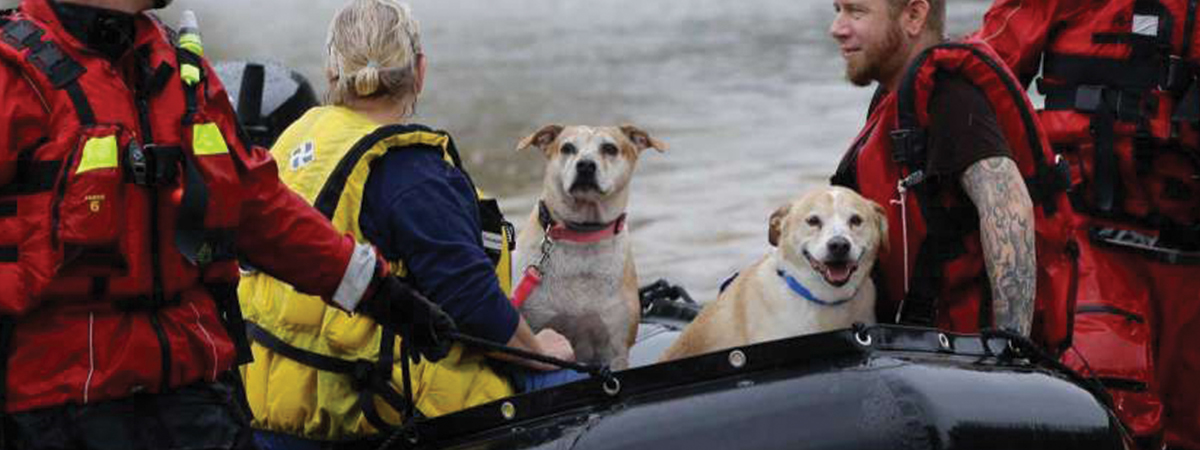
Disaster Planning: Preparing Your Pets for Emergencies Today
There is no better time than the present to prepare for the future – and with the extreme weather we’ve already experienced to date this hurricane season, now is the time to plan your response should you and your family (including your furry loved ones) need to act quickly to stay out of harm’s way.
What Can I Do to Prepare for an Emergency?
There are several proactive steps you can take to ready your family should disaster hit close to home. Don’t wait until it’s too late – begin putting together our Emergency Action Plan by:
Preparing an Emergency Kit – Using the Federal Emergency Management Agency’s (FEMA) guide, start gathering and organizing the essentials to ensure that your pet is safe and as comfortable as possible in the event of an emergency or should you need to immediately evacuate your home:
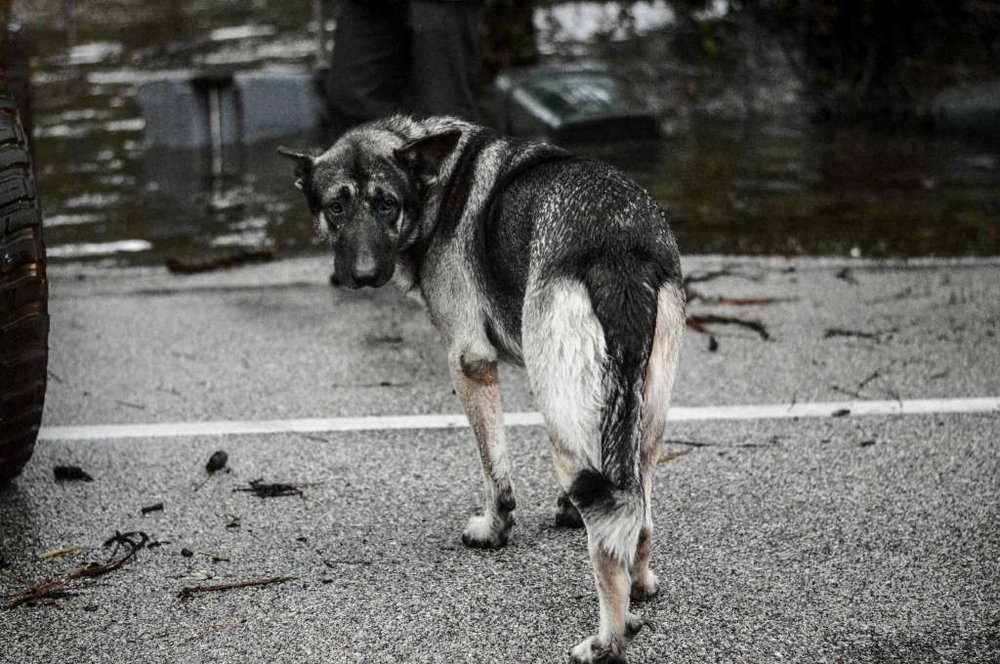 Photo Credit: Nana Ankamah via Houston Chronicle
Photo Credit: Nana Ankamah via Houston Chronicle
- Food and Water: In addition to what you will need for your family, prepare to have at least 3 days of food and water in sealed containers for your pet
- First Aid Materials: Plan to consult with your veterinarian about what items are most important for your pet’s emergency kit, but some general items include: an extra supply of any necessary medications, cotton bandage rolls; bandage tape and scissors; antibiotic ointment; flea and tick prevention; latex gloves, isopropyl alcohol; and saline solution. Include a pet first aid reference book.
- Collar with ID tag and leash: While your pet should ideally always wear a collar with up-to-date identification tags, it is a good idea to have a copy of your pet’s tags along with a spare collar and leash on hand.
 Photo Credit: I_Love_Bull_terriers via Pixabay
Photo Credit: I_Love_Bull_terriers via Pixabay
- Crate or Carrier: Having a crate or carrier that is large enough for small animals to stand and/or move comfortably in will be important should your pet be in the event of an emergency evacuation. Always plan to take your pet with you in an evacuation situation pending direction from your emergency management personnel.
- Sanitation: Include pet litter and litter box if necessary, newspapers, paper towels, plastic trash bags and household chlorine bleach to provide for your pet’s sanitation needs. According to FEMA’s website, bleach can be used as a disinfectant by diluting nine parts water to one part bleach. Use eight drops of regular household liquid bleach per gallon of water, stir well and let it stand for 30 minutes before use. Be sure to avoid using scented or color safe bleaches or any bleach with added cleaners.
- Photo of Your Pet: Have a hard copy of a recent, high-resolution full front photo of your pet in case they get separated and you need to make a missing poster. Learn more about our recommendations for creating ideal missing posters here on our blog.
 Photo Credit: Meditations via Pixabay
Photo Credit: Meditations via Pixabay
- Other Important Documents: Securely additional printed copies of any important identification for your pet, including registration information, adoption papers, vaccination documents and medical records.
- Familiar Items: Bring along a couple of familiar items to help reduce your pet’s stress during any hectic moments, such as their favorite toys, treats or bedding.
You can see a complete list of FEMA’s recommendations by reviewing their full list of pet emergency supplies.
Determining Pet Caregivers
Deciding with whom to trust the temporary (or potentially long term) wellbeing of your pet may take some time to consider and solidify, so the Humane Society of the United States recommends:
- Finding a Care Buddy Early: Reach out early to family, friends or neighbors to ensure someone you trust is available to take over care of your pet should you need to evacuate and are unable to take your pet or should local shelters do not have enough space to accommodate your pet during the storm.
- Creating Care Manuals & Communications Plans: Prepare documents for how to best take care of your pet in your absence and work together with your caregiver to determine temporary and long-term communication contingency plans for during and after an emergency.
- Establishing Meeting Locations: Be sure to show your trusted caregiver where you keep your emergency supplies/evacuation kits as well as agree upon a specific reunification location should you need to meet up with your caregiver during or after an emergency.
 Photo Credit: StockSnap via Pixabay
Photo Credit: StockSnap via Pixabay
Consulting your Veterinarian on Emergency Planning
Work closely with your veterinarian during your pet’s annual or bi-annual check-ups to best ensure your pet is prepared for an emergency or crisis. Your veterinarian can help you:
- Determine necessary medicines/dosages to include in your pet’s emergency kit;
- Confirm that your pet’s microchip is functioning and that your contact information is accurate;
- Test whether your pet’s vaccinations are up-to-date;
- Gather additional contact information for local animal control agencies and pet shelters, such the Humane Society, ASPCA, and emergency veterinary hospitals. Keep one copy of these phone numbers with you, and one in your pet’s emergency supply kit.
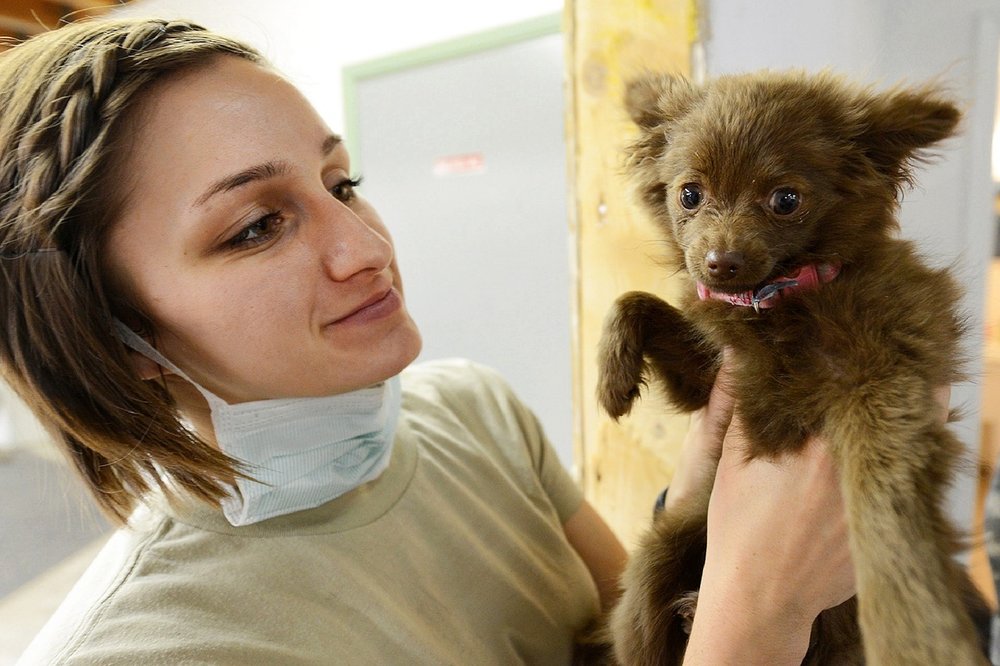 Photo Credit: skeeze via Pixabay
Photo Credit: skeeze via Pixabay
Getting a Rescue Alert Sticker
The American Society for the Prevention of Cruelty to Animals (ASPCA) encourages pet owners to apply online for a rescue alert sticker, which lets emergency management personnel and community members that there are pets in the home. The sticker (which the ASPCA recommends securing on or near your front door) includes information on the number of pets in the home, identification details, and medical/veterinary contact information. Should you need to evacuate with your pets, and if time allows, write “EVACUATED” across the stickers before leaving your home.
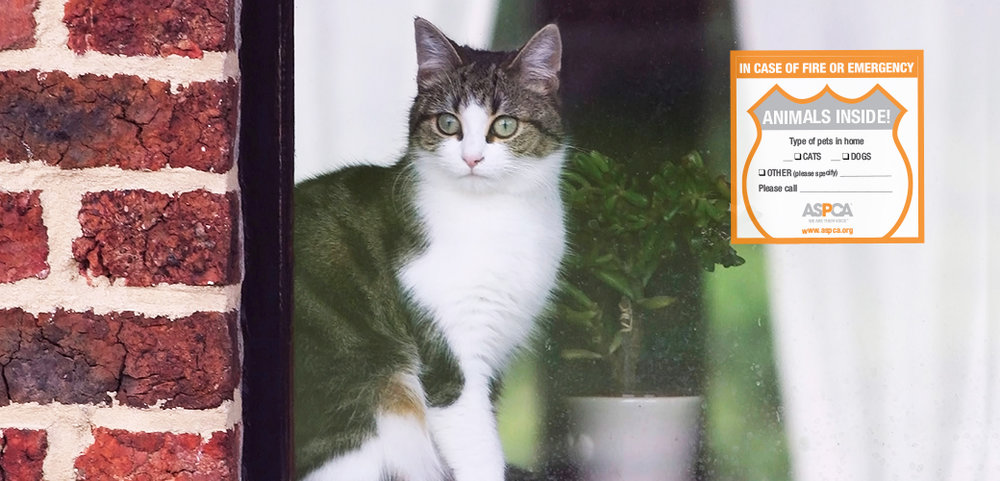 Photo Credit: ASPCA
Photo Credit: ASPCA
What Should I Do During an Emergency?
Step 1: Stay Alert
Once it has been determined that a storm is heading in your direction, you should be prepared to put your emergency plan into action with a moment’s notice. Plan to have a battery-powered radio tuned into a local weather and to follow TV, radio and mobile alerts about updates on severe conditions in your area.
Step 2: Put Your Plan Into Action
You have prepared for the worst, so be ready to be nimble and flexible in implementing your plan should a disaster head your way.
- Listen carefully to the warnings and instructions of your officials and disaster response crew members should they advise you to evacuate your home.
- Always plan to evacuate your pets with you when possible as they can be injured or lost if left behind; if you absolutely must leave without your pets, do not chain them up outside or inside the home.
- Be prepared to alert your temporary caregivers and/or area animal shelters in the event you need emergency shelter or foster care during a crisis.
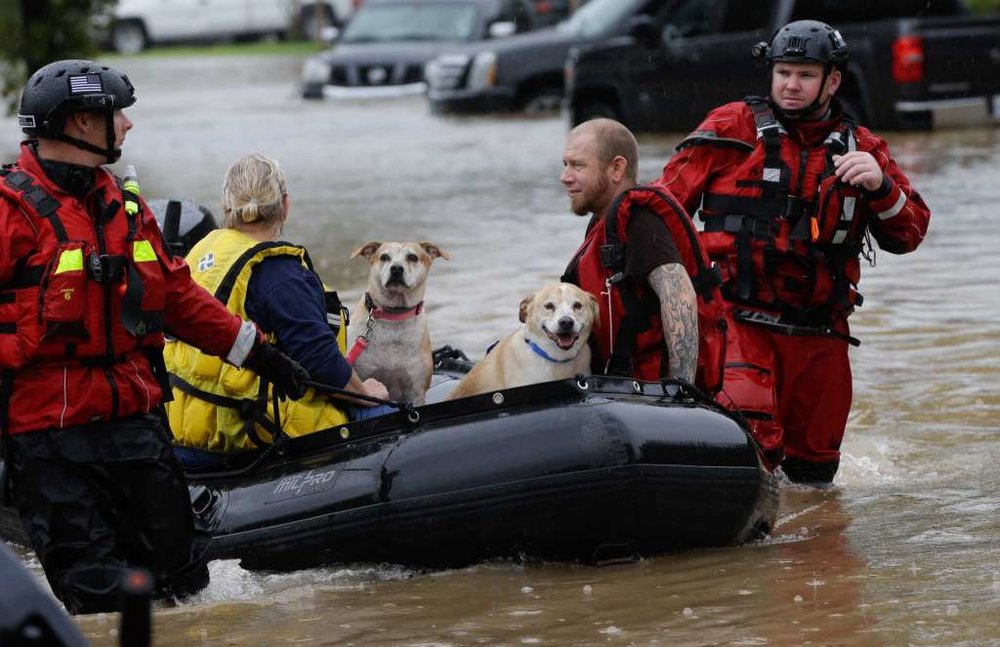 Photo Credit: Melissa Phillip via Houston Chronicle
Photo Credit: Melissa Phillip via Houston Chronicle
Geographic Considerations: The ASPCA recommends planning accordingly if your home is in an area that is prone to certain natural disasters, such as tornadoes, earthquakes, hurricanes, or floods:
- Coordinate with your family in to determine “safe haven” rooms in your home that are clear or hazards such as windows, flying debris, etc.
- In regions that are likely to lose electricity, fill up bathtubs and sinks ahead of time to ensure that you have access to water during a power outage or other crises.
- Should flooding occur, seek shelter in the highest location in your home or in a room that has access to counters or high shelves where your animals can find refuge.
 Photo Credit: Leo_65 via Pixabay
Photo Credit: Leo_65 via Pixabay
Step 3: Keep PawBoost Alert
Despite our careful planning, there’s always a chance we may experience unexpected “mini-crises” during an emergency. Should you become separated from your pet or find a lost pet during a natural disaster, PawBoost is here to help.
Remember to keep calm and use our “Report a Pet” feature to create alerts about the missing pet – generating awareness as soon as possible can help more quickly and efficiently reunite missing pets with their owners during an emergency.
Learn more about how to pet prepare your family’s Emergency Action Plan at:
